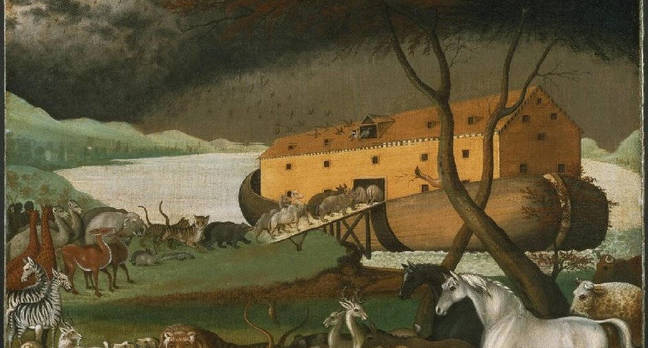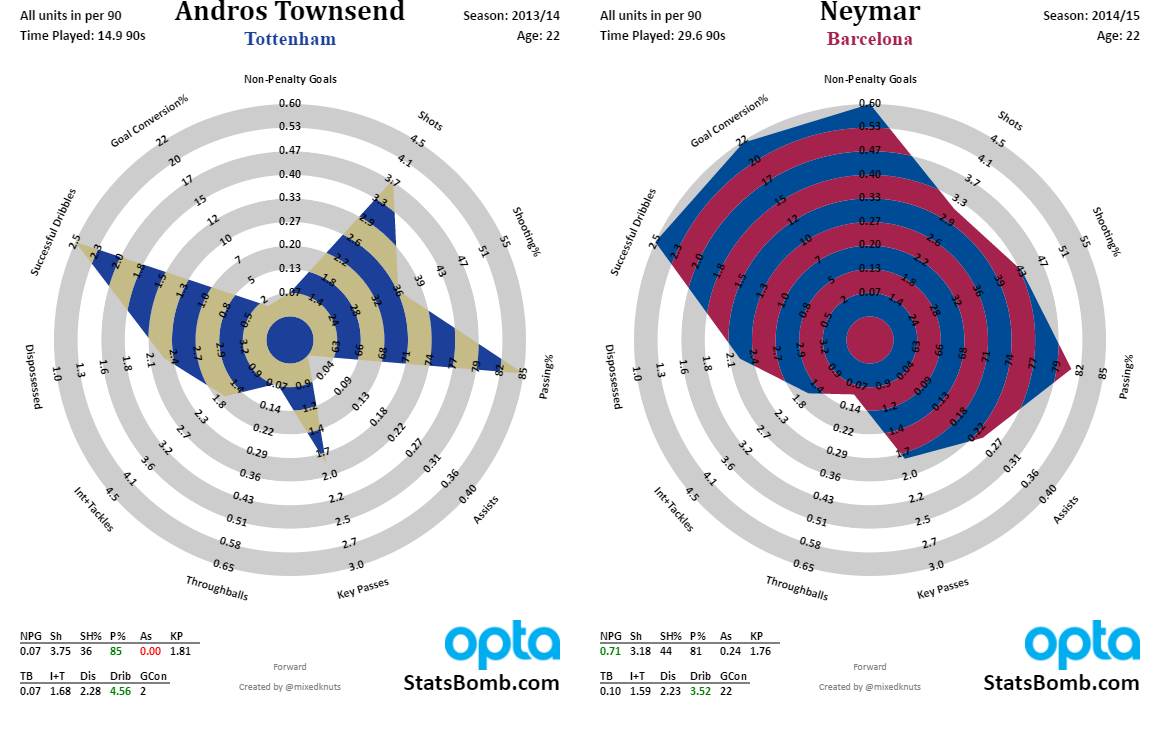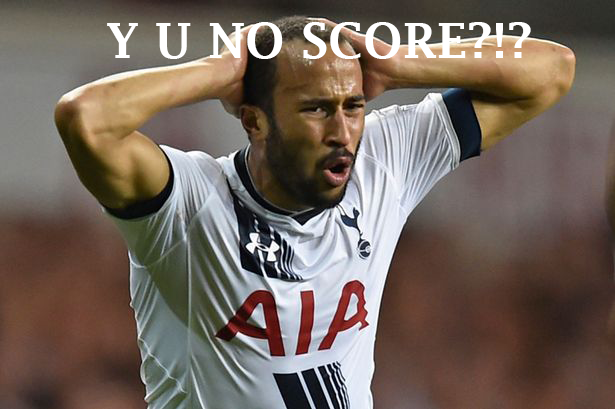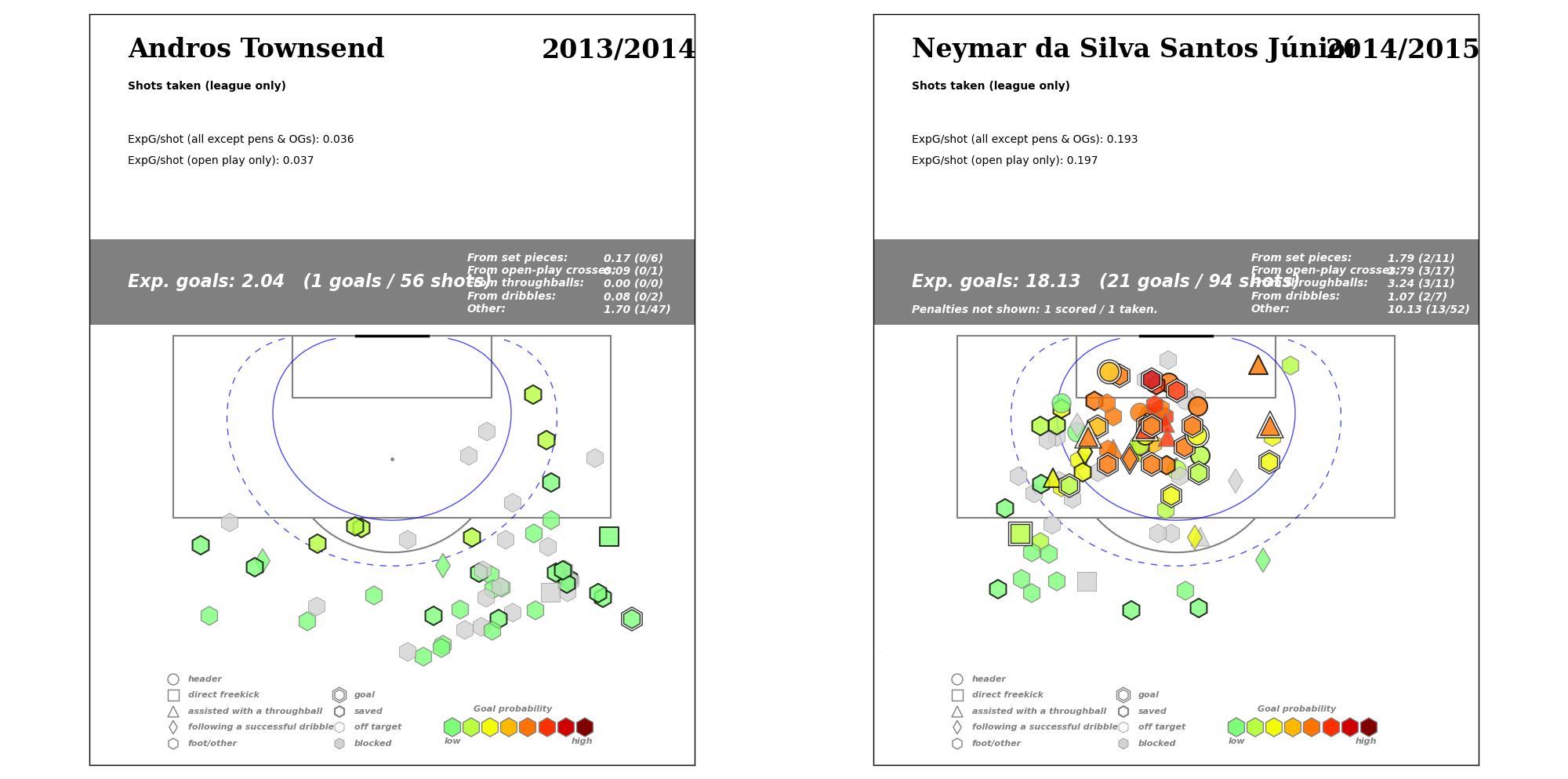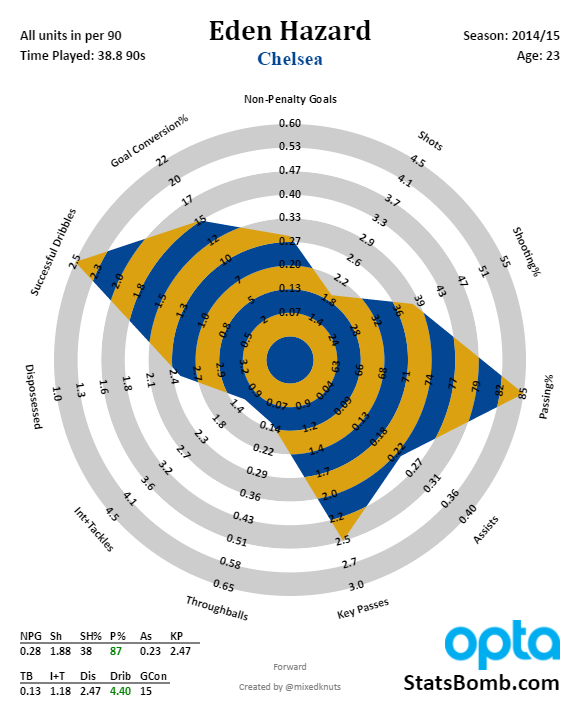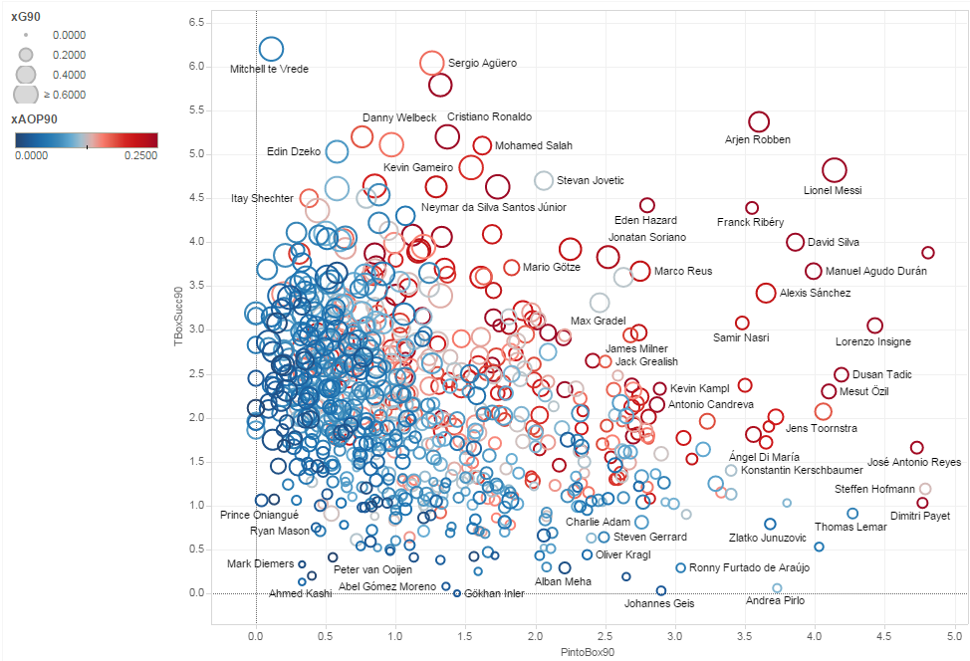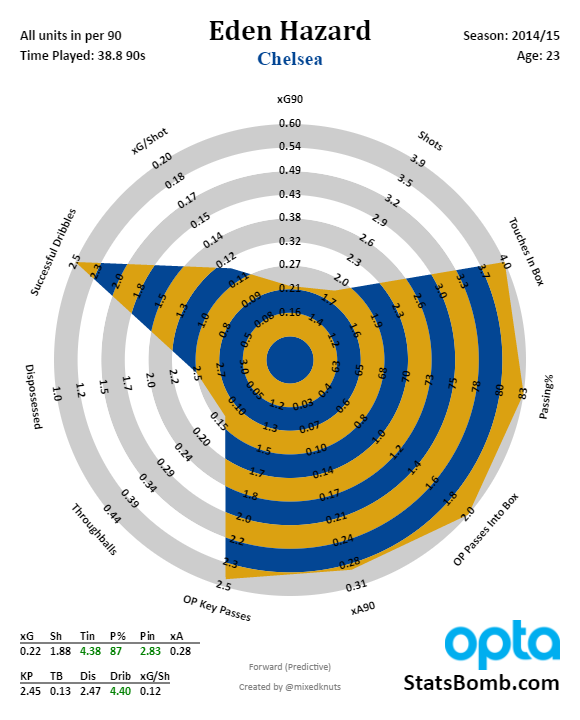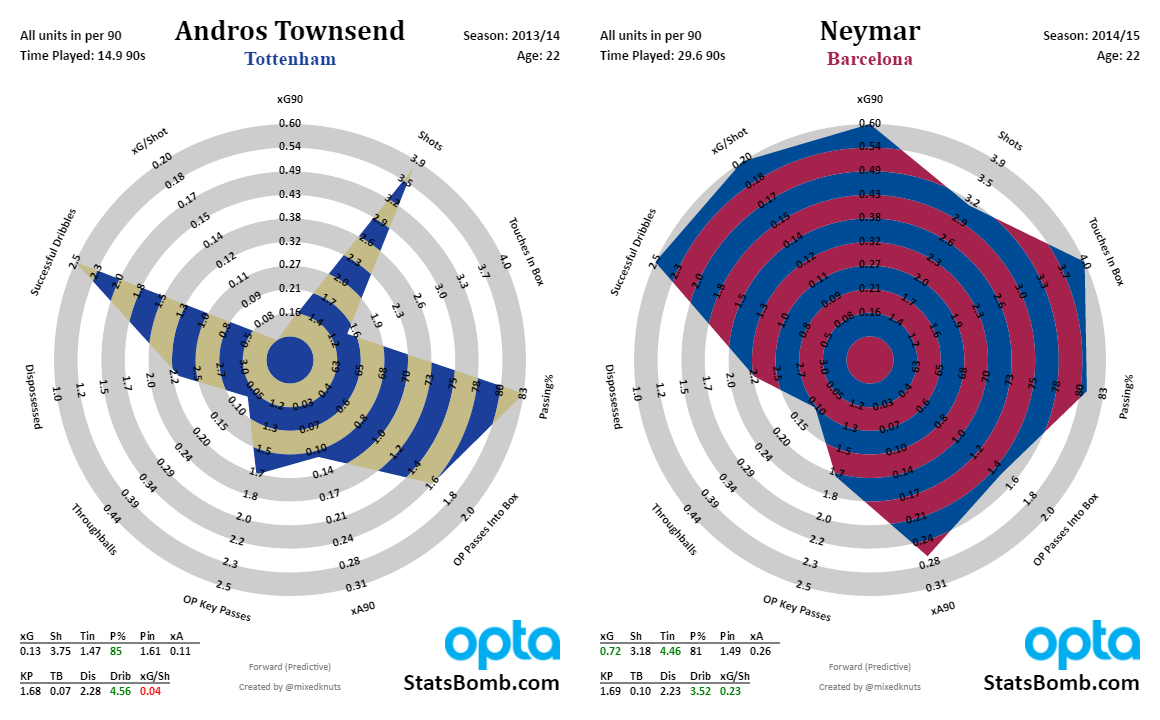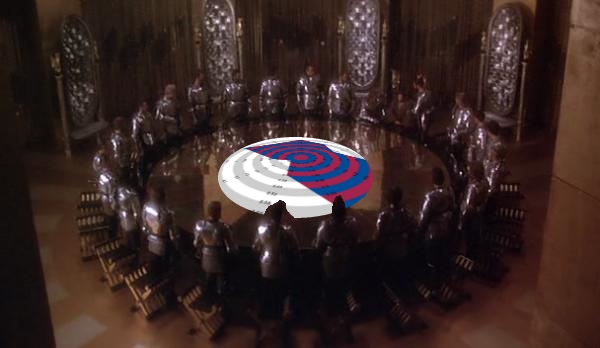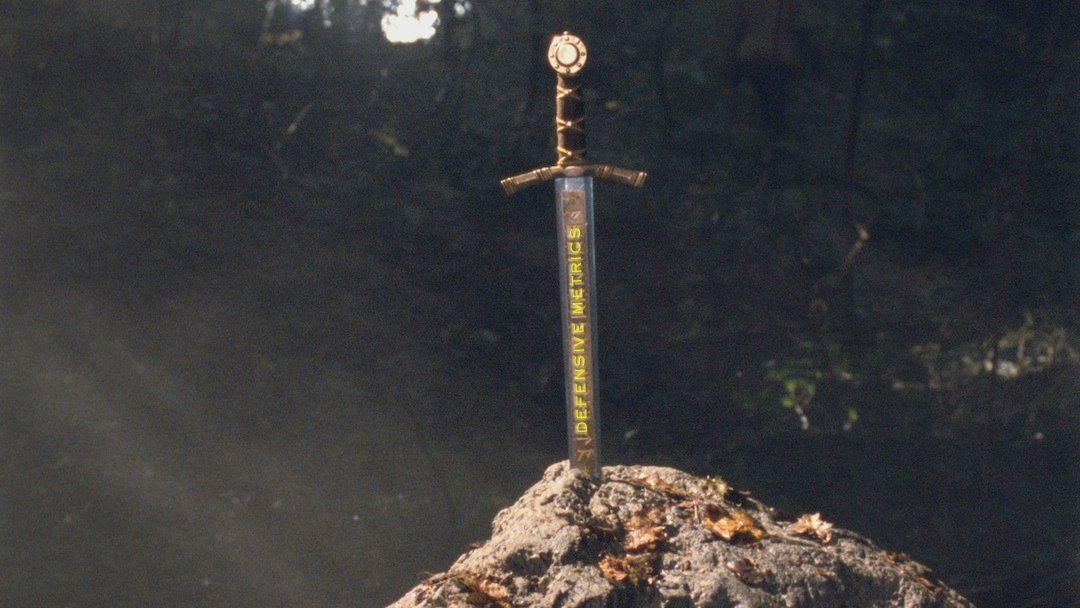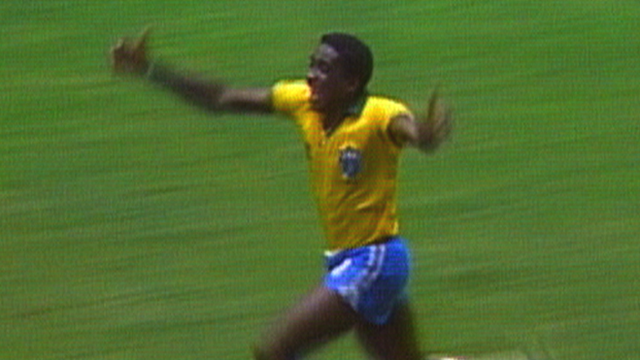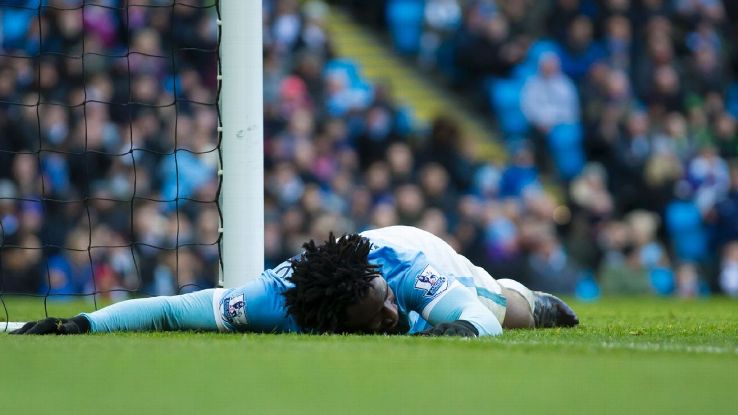 Maybe? Six weeks in and a few storylines are taking shape: Jose Mourinho is finished, but maybe he isn't, Antonio Conte has fixed Chelsea, but maybe he hasn't, Liverpool are playing like they've got Luis Suarez in the side, but maybe he left years ago and is shredding the Spanish league and so on. Beyond the tales of narrative what interests me is that over the first six weeks, the goals are (comparatively) flying in. Across the league, 11% of all shots have hit the back of the net and 34% of shots on target. This compares to long term averages of around 9.8 to 10% and 30%. Now the likely explanation here is the same as everything right now: it's six weeks, it's a brief skew, these things happen, but there's a tantalising possibility that it's something else and there are two interesting and possibly interlinked ideas that could be impacting here. Firstly, there's a strong argument that the coaching talent has increased in the league this year, and it's not absurd to think that with that increase in quality is an increase in understanding how important it is to derive high volumes of strong location shots. Better tactical nous should include an understanding that creating clearer and closer shots is a desirable outcome to any strategy, so maybe that's what's happened? Maybe? Another theory is this. Cast your mind back twelve months: West Ham and Leicester were 3rd and 4th on twelve points, Tottenham 9th with nine, Liverpool 12th with eight and Chelsea 15th with seven. Some things were the same, Man City were top, Sunderland were bottom, but there looked to a be a middle class rise, and one that miraculously maintained for Leicester. This usually happens to some degree; a mid-range team or two gets a hot start and is in there pitching during the early months of the season before eventually fading or clinging on to a lower European slot. This season looks very different, and a good deal more orthodox. Having played six games each and discounting the five games between them, the six primary top four contenders, City, United, Arsenal, Chelsea, Tottenham and Liverpool have only suffered two defeats and managed three draws. That means they're running at 21-3-2 against the rest of the league, only United at Watford and Liverpool at Burnley have suffered defeat. Dive further in and these teams are averaging 18.9 shots and 6.5 shots on target against the rest while conceding 8.6 and 2.7 and this is powering averages of 2.4 goals scored per game and 0.8 conceded. The middle class spent fortunes in the summer (as did everyone), buoyed by the television money, yet so far the league looks strictly tiered; the big clubs got stronger and have clearly represented that by steamrollering the rest. "But," I hear you cry, "Palace are above Chelsea, and Everton are above them and United" and I reply, "Sure, but each has only faced Tottenham of the big six, and didn't beat them." Southampton and an organised Everton should be able to land comfortably in the top half and if Leicester get a little more organised themselves, maybe they will too but the old order looks to have returned. Is this dominance what is skewing these conversion numbers up? Well, a bit? These teams are converting at high rates in these games, but that's offset to a degree by the opposition not doing so; while it accounts for some of the rise, it doesn't account for it all. The rest of the league is still playing each other and converting shots at 10.4% and those on target at 33%, higher than long term averages. Maybe this is the short term skew and the big teams' dominance, via relatively fresh, shrewd methods of Pep Guardiola, Jurgen Klopp and Antonio Conte, the goals and shots returning to United and the solid attacks of Arsenal and Tottenham, that is representative of change? Maybe. But it's only six games. We shall see. Some things happen, other things don't
Maybe? Six weeks in and a few storylines are taking shape: Jose Mourinho is finished, but maybe he isn't, Antonio Conte has fixed Chelsea, but maybe he hasn't, Liverpool are playing like they've got Luis Suarez in the side, but maybe he left years ago and is shredding the Spanish league and so on. Beyond the tales of narrative what interests me is that over the first six weeks, the goals are (comparatively) flying in. Across the league, 11% of all shots have hit the back of the net and 34% of shots on target. This compares to long term averages of around 9.8 to 10% and 30%. Now the likely explanation here is the same as everything right now: it's six weeks, it's a brief skew, these things happen, but there's a tantalising possibility that it's something else and there are two interesting and possibly interlinked ideas that could be impacting here. Firstly, there's a strong argument that the coaching talent has increased in the league this year, and it's not absurd to think that with that increase in quality is an increase in understanding how important it is to derive high volumes of strong location shots. Better tactical nous should include an understanding that creating clearer and closer shots is a desirable outcome to any strategy, so maybe that's what's happened? Maybe? Another theory is this. Cast your mind back twelve months: West Ham and Leicester were 3rd and 4th on twelve points, Tottenham 9th with nine, Liverpool 12th with eight and Chelsea 15th with seven. Some things were the same, Man City were top, Sunderland were bottom, but there looked to a be a middle class rise, and one that miraculously maintained for Leicester. This usually happens to some degree; a mid-range team or two gets a hot start and is in there pitching during the early months of the season before eventually fading or clinging on to a lower European slot. This season looks very different, and a good deal more orthodox. Having played six games each and discounting the five games between them, the six primary top four contenders, City, United, Arsenal, Chelsea, Tottenham and Liverpool have only suffered two defeats and managed three draws. That means they're running at 21-3-2 against the rest of the league, only United at Watford and Liverpool at Burnley have suffered defeat. Dive further in and these teams are averaging 18.9 shots and 6.5 shots on target against the rest while conceding 8.6 and 2.7 and this is powering averages of 2.4 goals scored per game and 0.8 conceded. The middle class spent fortunes in the summer (as did everyone), buoyed by the television money, yet so far the league looks strictly tiered; the big clubs got stronger and have clearly represented that by steamrollering the rest. "But," I hear you cry, "Palace are above Chelsea, and Everton are above them and United" and I reply, "Sure, but each has only faced Tottenham of the big six, and didn't beat them." Southampton and an organised Everton should be able to land comfortably in the top half and if Leicester get a little more organised themselves, maybe they will too but the old order looks to have returned. Is this dominance what is skewing these conversion numbers up? Well, a bit? These teams are converting at high rates in these games, but that's offset to a degree by the opposition not doing so; while it accounts for some of the rise, it doesn't account for it all. The rest of the league is still playing each other and converting shots at 10.4% and those on target at 33%, higher than long term averages. Maybe this is the short term skew and the big teams' dominance, via relatively fresh, shrewd methods of Pep Guardiola, Jurgen Klopp and Antonio Conte, the goals and shots returning to United and the solid attacks of Arsenal and Tottenham, that is representative of change? Maybe. But it's only six games. We shall see. Some things happen, other things don't
- Cold foot, hot foot
It's long been a small side project of mine to ponder about players shooting and which foot they use. Building a new kind of analytics isn't easy and this certainly isn't it but that doesn't mean that questions surrounding what might seem simple aspects of the game do not reward investigation. This topic re-interested me just recently and upon looking at some data from last season it struck me that very simple cases of reversion can present themselves. It once again highlights why process rather than outcome is the first place you want to search for answers when reviewing the abilities of players for whatever reason takes your fancy; be it recruitment, fantasy football or just idle curiosity. Separating players' shot totals into three buckets, right foot, left foot and head and filtering to 30 minimum attempts in the big five European leagues, the top five underperforming players by foot were all examples of players who had so with their right foot. They'd scored few and way underhit an expected goal value, specifically with that body part. Here they are: 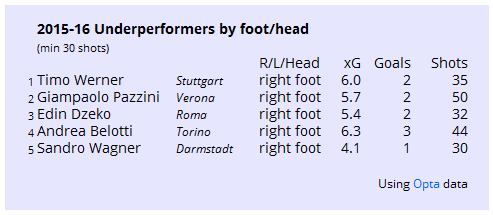 So what have we got here? A mixed bunch. Werner was part of the Stuttgart car crash shots team that skewed so badly that they went down (but unsurprisingly caught the eye of the smart RB Leipzig recruitment team). Pazzini underpowered Verona to 5 wins all year and they got relegated. Dzeko got a lot of shit for missing a ton of chances at Roma, Belotti showed range and scored four with his left foot, a header and some penalties in a respectable 12 goal season that could have been much more, and the versatile Wagner scored 11 times with his left foot and his head in a fine season for Darmstadt. What came next? Well, Pazzini apart--he continues in the data vortex of Serie B, though has scored a couple--lo and behold, they've all started this season well and having scored 8 goals from 141 right footed shots last year, have each already contributed towards scoring 7 from 37 this.* Quick reversion all round. 2. Sadio Mané Anyway, so what? This is a small sample of a subset, but it does once again highlight that the output (last year's goals) was less accurately reflective than the process (shots refined to expected goals). And for the most part, there's useful enactable truth therein. Step forward Sadio Mané. Last season, a four month stretch of not scoring in the league ended in March with a brace against Liverpool. Up to that point he was underhitting an expected goal volume by a league high volume. His cold streak concealed what was still solid process, and by season's end he'd added six more goals and had "caught up" with broad expectation, as we can see here in his high quality location map: lots in the box and close in:
So what have we got here? A mixed bunch. Werner was part of the Stuttgart car crash shots team that skewed so badly that they went down (but unsurprisingly caught the eye of the smart RB Leipzig recruitment team). Pazzini underpowered Verona to 5 wins all year and they got relegated. Dzeko got a lot of shit for missing a ton of chances at Roma, Belotti showed range and scored four with his left foot, a header and some penalties in a respectable 12 goal season that could have been much more, and the versatile Wagner scored 11 times with his left foot and his head in a fine season for Darmstadt. What came next? Well, Pazzini apart--he continues in the data vortex of Serie B, though has scored a couple--lo and behold, they've all started this season well and having scored 8 goals from 141 right footed shots last year, have each already contributed towards scoring 7 from 37 this.* Quick reversion all round. 2. Sadio Mané Anyway, so what? This is a small sample of a subset, but it does once again highlight that the output (last year's goals) was less accurately reflective than the process (shots refined to expected goals). And for the most part, there's useful enactable truth therein. Step forward Sadio Mané. Last season, a four month stretch of not scoring in the league ended in March with a brace against Liverpool. Up to that point he was underhitting an expected goal volume by a league high volume. His cold streak concealed what was still solid process, and by season's end he'd added six more goals and had "caught up" with broad expectation, as we can see here in his high quality location map: lots in the box and close in: 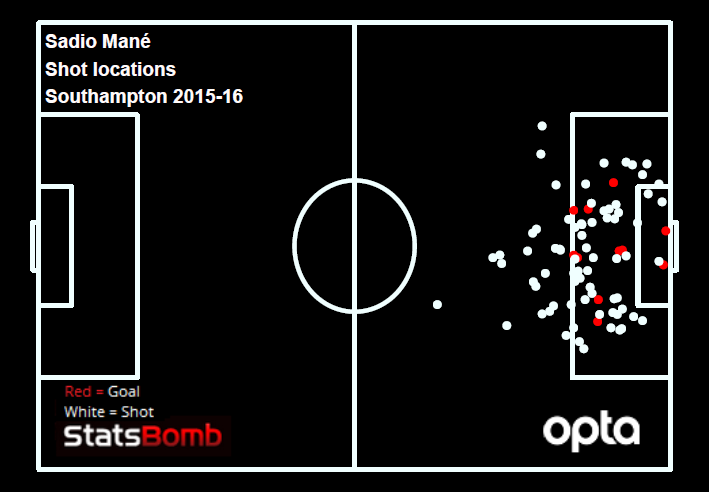 At no point did he profile like a player who was failing, yet there were people that questioned his move to Liverpool, perhaps remembering the scoreless run. So far this year he's hit the ground running and looks to be an inspired pick for style, process and output, and for that there are similarities with the suitability of Roberto Firmino last year (who also profiled very well, and ironically for a Klopp team too, since he predated him). This is the second summer in a row Liverpool look to have nailed a big attacking transfer. 3. Wilfried Bony Another player to catch the eye when looking at this is Stoke City's loanee Wilfried Bony. Here's a player that got the big move to Manchester City then went into a huge finishing slump and found himself a peripheral member of the team. I was positive about his move to the Potteries, and confident that Stoke had a good deal here, but damn does he need to find himself quickly. A right footer, he hasn't scored with his right foot in the league since May 2015. His overall shot rate remained high last year at around 4.4 per 90, over three of which were coming from inside the box and he played over 1200 minutes but he could not score with his stronger foot. Landing in a Stoke side that hasn't got anything going at all yet, he's currently scoreless again. What if he was a bad fit at City, but it wasn't really his fault? If we look at his right foot shot maps for the 2015-16 aberration and for the months at Swansea, it's revealing:
At no point did he profile like a player who was failing, yet there were people that questioned his move to Liverpool, perhaps remembering the scoreless run. So far this year he's hit the ground running and looks to be an inspired pick for style, process and output, and for that there are similarities with the suitability of Roberto Firmino last year (who also profiled very well, and ironically for a Klopp team too, since he predated him). This is the second summer in a row Liverpool look to have nailed a big attacking transfer. 3. Wilfried Bony Another player to catch the eye when looking at this is Stoke City's loanee Wilfried Bony. Here's a player that got the big move to Manchester City then went into a huge finishing slump and found himself a peripheral member of the team. I was positive about his move to the Potteries, and confident that Stoke had a good deal here, but damn does he need to find himself quickly. A right footer, he hasn't scored with his right foot in the league since May 2015. His overall shot rate remained high last year at around 4.4 per 90, over three of which were coming from inside the box and he played over 1200 minutes but he could not score with his stronger foot. Landing in a Stoke side that hasn't got anything going at all yet, he's currently scoreless again. What if he was a bad fit at City, but it wasn't really his fault? If we look at his right foot shot maps for the 2015-16 aberration and for the months at Swansea, it's revealing: 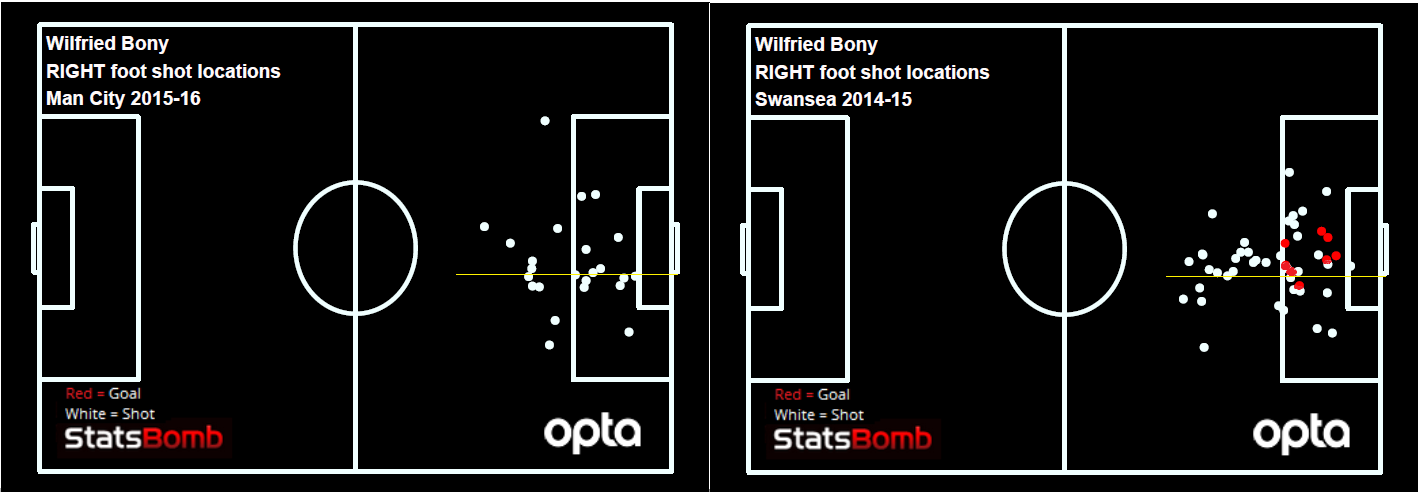 Under Manuel Pellegrini, City ran an attacking scheme that at times required their strikers to drift parallel towards the near post to receive cutbacks-- think about it, you can see Sergio Agüero doing exactly that--and Bony's 2015-16 shot map suggests that's exactly what he was trying to do (Yellow line indicates parallel to post). However, if we check his Swansea 2014-15 map, 7/8 goals he scored with his right foot were from within the width of the frame of the goal and he showed no particular aptitude for shooting from this near post position. Indeed his whole profile suggests he is a player that particularly thrives very centrally and offers nearly nothing beyond. There may be more to it: Manchester City would have faced more packed defences than Swansea but the flip to that is that he was often a substitute and rates rise and space can increase late in games. Regardless, the upshot was that between his team mates, himself and the strategists, factors prevented Wilfried Bony from getting good quality chances on his favoured foot in areas he had previously been successful from. It looks as though he dutifully rumbled to the near post and struggled. Again you can visualise this. Think of Bony striking the ball. He isn't a dynamic shooter, he has a more careful sometimes punchy technique and his physical strength allows his more languid style to pay off. Bony is also good in the air, yet despite high shot volumes, City were rarely a team that focused on crossing and creating headed chances. A bad fit? Sure thing, and something you might think that could easily have been identified before spending £30m (back in 2015, this was a large fee...). It remains to be seen if Stoke City can get the best from him, and hindsight sure helps, but do they even know this stuff? Across his three league games for them his seven shots are all right footed, consist of four beneath the yellow line marked, three from outside the box and he is yet to register a header, so maybe not, yet. __________________ Thanks for reading @jair1970 *before this weekend anyway, Dzeko kindly went 0/3 right footed and 0/8 all in against Torino, while Belotti nailed a header, won a penalty and landed an assist in the same game.
Under Manuel Pellegrini, City ran an attacking scheme that at times required their strikers to drift parallel towards the near post to receive cutbacks-- think about it, you can see Sergio Agüero doing exactly that--and Bony's 2015-16 shot map suggests that's exactly what he was trying to do (Yellow line indicates parallel to post). However, if we check his Swansea 2014-15 map, 7/8 goals he scored with his right foot were from within the width of the frame of the goal and he showed no particular aptitude for shooting from this near post position. Indeed his whole profile suggests he is a player that particularly thrives very centrally and offers nearly nothing beyond. There may be more to it: Manchester City would have faced more packed defences than Swansea but the flip to that is that he was often a substitute and rates rise and space can increase late in games. Regardless, the upshot was that between his team mates, himself and the strategists, factors prevented Wilfried Bony from getting good quality chances on his favoured foot in areas he had previously been successful from. It looks as though he dutifully rumbled to the near post and struggled. Again you can visualise this. Think of Bony striking the ball. He isn't a dynamic shooter, he has a more careful sometimes punchy technique and his physical strength allows his more languid style to pay off. Bony is also good in the air, yet despite high shot volumes, City were rarely a team that focused on crossing and creating headed chances. A bad fit? Sure thing, and something you might think that could easily have been identified before spending £30m (back in 2015, this was a large fee...). It remains to be seen if Stoke City can get the best from him, and hindsight sure helps, but do they even know this stuff? Across his three league games for them his seven shots are all right footed, consist of four beneath the yellow line marked, three from outside the box and he is yet to register a header, so maybe not, yet. __________________ Thanks for reading @jair1970 *before this weekend anyway, Dzeko kindly went 0/3 right footed and 0/8 all in against Torino, while Belotti nailed a header, won a penalty and landed an assist in the same game.
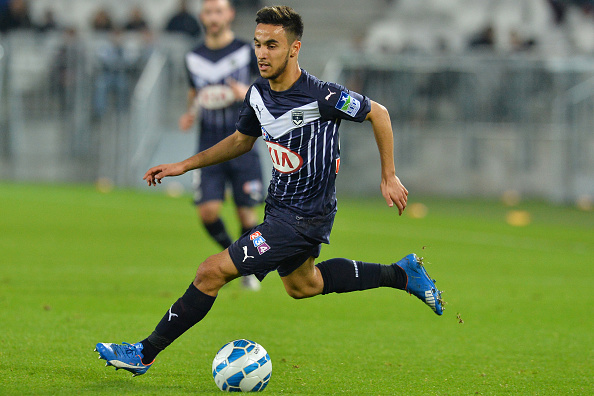
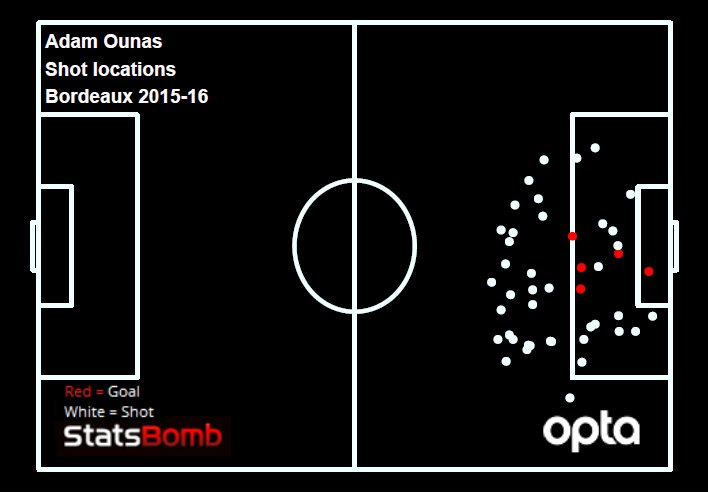 Can he dribble? Well 6 attempted dribbles per 90 at least tells us that he tries a lot to run at them How about as a playmaker? Nothing of note really yet but forgivable seeing as he’s still 19 on a mediocre Ligue 1 side
Can he dribble? Well 6 attempted dribbles per 90 at least tells us that he tries a lot to run at them How about as a playmaker? Nothing of note really yet but forgivable seeing as he’s still 19 on a mediocre Ligue 1 side 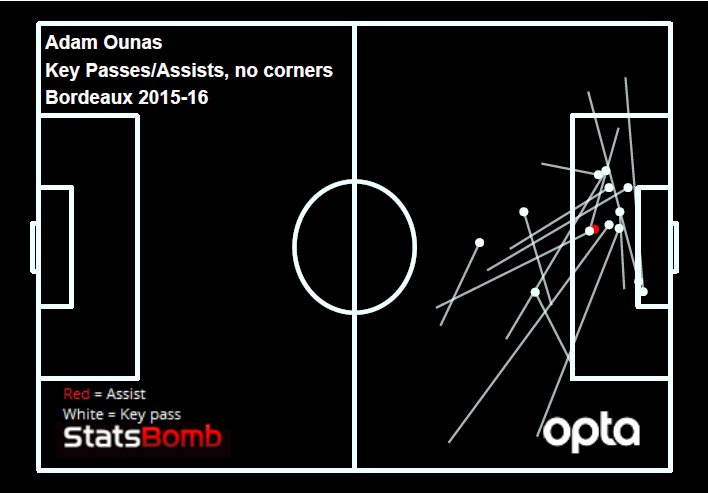 How about his decision making? Well let’s get to that. So here’s the thing. Adam Ounas profiles quite well statistically especially considering Bordeaux are a club without a recognizable star like Lyon have or being on a super team like PSG are. As a shot taker, the ability to create semi decent shots consistently is a skill and to this point Ounas’ skill set would dictate that he can grow into being that type of player. Taking over 3 shots per 90 and accumulating a decent xG90 rate is promising stuff, and again, he’s only 19. This is the type of profile as a team you would love to get cause the upside is massive. But yet I can’t shake off this feeling of not totally being in love with him despite the numbers. To be clear, Ounas is a very talented prospect but perhaps it’s the amount of times he settles for long range screamers or how many times he would cut into the final third with throughball opportunities or opportunities to recycle possession, but ignore them. While the talent is massive, I don’t think he uses it anywhere near as efficiently as he could. Some of it is due to environmental factors surrounding him (poor coaching, shaky roster etc..), some of it is also due to him being 19 years old, but it also as well comes down to a probable contrasting idea of what a good shot is versus what isn't. Good There’s the old saying of players being worth the price of admission because of how electrifying their dribbling can be. Dembele last season was the perfect example because he made fools out of everyone last season, plus those dribbles at times led to him either creating good opportunities for himself or for his teammates. While Ounas isn’t quite adept at doing the latter, his ability to shift and juke past multiple defenders is quite frankly fun as hell to watch: https://streamable.com/z3wg There’s a value to be had for a winger who can constantly get his team from the middle third to the final third by himself. With a better attacking structure, this can lead to creating high quality chances on enough occasions that it would become a massive boost for a club. Hazard was arguably the best player in the PL in 2014-15 because of his insane ability to do one man dribbling crusades into the box and create for others. Riyad Mahrez won plaudits for his ability to do both that and also be a threat to shoot. Ounas right now is somewhere in between: he can get into the box decently enough but it’s mostly for him to shoot first and pass second. Where he thrives as with most pacey attackers is in transition. There are very few players in Ligue 1 who can keep up with him in non structured scenarios even if his decision making isn’t quite there yet. https://streamable.com/a0h8 https://streamable.com/1be0 This is Adam Ounas at his best. Even if it's not always efficient, the volume of these opportunities can tilt the scale towards his favor. Bad The same ability to create a shot out of very little can be Ounas’ worse enemy as well. Take for instance this play
How about his decision making? Well let’s get to that. So here’s the thing. Adam Ounas profiles quite well statistically especially considering Bordeaux are a club without a recognizable star like Lyon have or being on a super team like PSG are. As a shot taker, the ability to create semi decent shots consistently is a skill and to this point Ounas’ skill set would dictate that he can grow into being that type of player. Taking over 3 shots per 90 and accumulating a decent xG90 rate is promising stuff, and again, he’s only 19. This is the type of profile as a team you would love to get cause the upside is massive. But yet I can’t shake off this feeling of not totally being in love with him despite the numbers. To be clear, Ounas is a very talented prospect but perhaps it’s the amount of times he settles for long range screamers or how many times he would cut into the final third with throughball opportunities or opportunities to recycle possession, but ignore them. While the talent is massive, I don’t think he uses it anywhere near as efficiently as he could. Some of it is due to environmental factors surrounding him (poor coaching, shaky roster etc..), some of it is also due to him being 19 years old, but it also as well comes down to a probable contrasting idea of what a good shot is versus what isn't. Good There’s the old saying of players being worth the price of admission because of how electrifying their dribbling can be. Dembele last season was the perfect example because he made fools out of everyone last season, plus those dribbles at times led to him either creating good opportunities for himself or for his teammates. While Ounas isn’t quite adept at doing the latter, his ability to shift and juke past multiple defenders is quite frankly fun as hell to watch: https://streamable.com/z3wg There’s a value to be had for a winger who can constantly get his team from the middle third to the final third by himself. With a better attacking structure, this can lead to creating high quality chances on enough occasions that it would become a massive boost for a club. Hazard was arguably the best player in the PL in 2014-15 because of his insane ability to do one man dribbling crusades into the box and create for others. Riyad Mahrez won plaudits for his ability to do both that and also be a threat to shoot. Ounas right now is somewhere in between: he can get into the box decently enough but it’s mostly for him to shoot first and pass second. Where he thrives as with most pacey attackers is in transition. There are very few players in Ligue 1 who can keep up with him in non structured scenarios even if his decision making isn’t quite there yet. https://streamable.com/a0h8 https://streamable.com/1be0 This is Adam Ounas at his best. Even if it's not always efficient, the volume of these opportunities can tilt the scale towards his favor. Bad The same ability to create a shot out of very little can be Ounas’ worse enemy as well. Take for instance this play 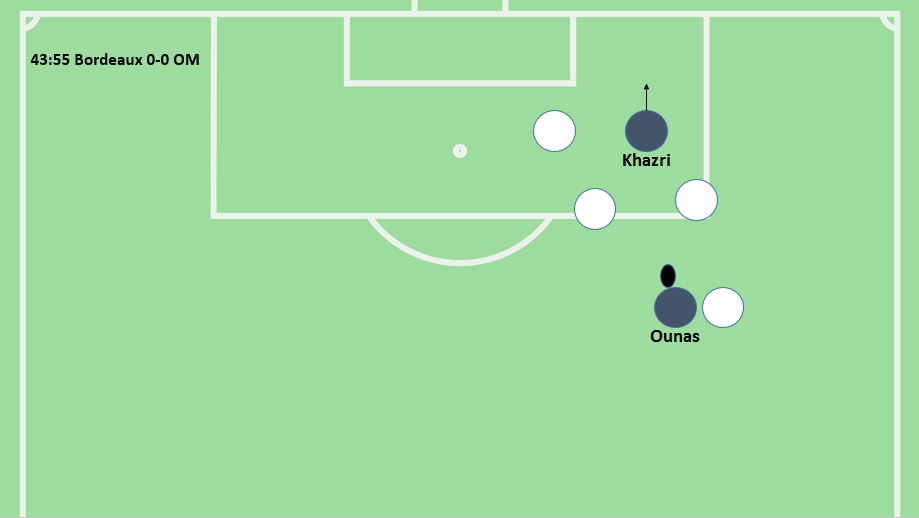 Now yes, a throughball pass to Khazri could very well end up being a shot from the wide space of the penalty area or even a cross. In the hierarchy of throughball chances created, this would be much lower down. But still that opportunity carries a considerably higher chance of something good happening than just launching a shot from Ounas’ location. Those type of distance opportunities get connected at around a ~3% clip. So what happens? https://streamable.com/w41g Oy Vey! Now if this was something resembling a one off then it would be fine enough. The very best teams in the world can create systems where they can repeatedly take good-great shots and well, he doesn’t play on one of those teams. As an inverted wide man on a Ligue 1 club with very little attacking structure, that role can at times lead to wayward shots. The thing is that these moments aren't few and far between and games featuring Ounas have these groan inducing shots. Here’s another example:
Now yes, a throughball pass to Khazri could very well end up being a shot from the wide space of the penalty area or even a cross. In the hierarchy of throughball chances created, this would be much lower down. But still that opportunity carries a considerably higher chance of something good happening than just launching a shot from Ounas’ location. Those type of distance opportunities get connected at around a ~3% clip. So what happens? https://streamable.com/w41g Oy Vey! Now if this was something resembling a one off then it would be fine enough. The very best teams in the world can create systems where they can repeatedly take good-great shots and well, he doesn’t play on one of those teams. As an inverted wide man on a Ligue 1 club with very little attacking structure, that role can at times lead to wayward shots. The thing is that these moments aren't few and far between and games featuring Ounas have these groan inducing shots. Here’s another example: 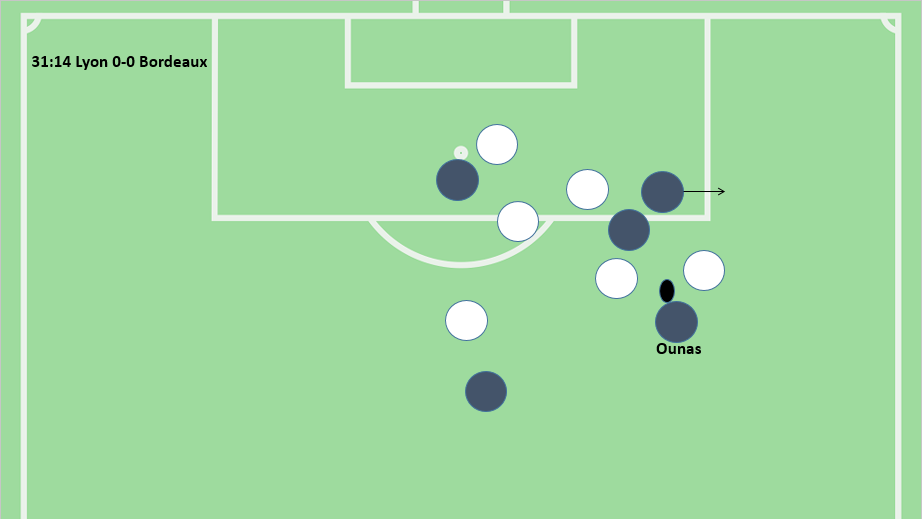 In fairness, there isn't much in the way of throughball opportunities here as Lyon congest the pitch. Really there's only two options: recycle the ball to a nearby teammate and continue to probe for a better opportunity (which does carry the risk of nothing good ever emerging) or pray that a shot in that scenario does anything of worth. What happens here? https://streamable.com/nxtt It's situations like this that give you a greater appreciation for teams who train their players to value possessions and not give defenses an out, especially defenses that generally defend deeper. Ligue 1 is a league where generally teams defend with lower blocks so what they're looking for is crosses from further out and bail out shots like this. The more teams probe around and carry the threat of goal, the better. Of course there's a billion factors that go into being able to construct that type of offense but the point still stands. I would also guess that Ounas is also one of numerous players who have a higher opinion of the probabilities of these type of shots going in. Soccer in the end of the day is about probabilities; the more times you can create high quality chances, the better chance you have in winning. Instances like this don't help with that. How he stacks with his peers The obvious comparison is with Nabil Fekir, both in terms of their body composition and their general style of play. Both are left footed who in a perfect world like to cut into the middle all the time. It can even be argued that when it comes to athleticism, Ounas has an advantage over the Lyon starlet. During Fekir’s breakout season, he got to play the majority of it as a second striker which allowed him more freedom to roam around and dictate at his pace. He’s more cerebral than Ounas and used it to maximize his shots from open play. At times it feels like Ounas is just rushing possessions for the sake of it, ending up with 23 yard shots that had minuscule chances of going in. It can’t be denied though that there is also statistical merit towards the comparison between the two. In fact, even with all his flaws in structured scenarios, Ounas production stacks up quite well compared to some of the young attacking talents that have plied their work in France over the past two seasons:
In fairness, there isn't much in the way of throughball opportunities here as Lyon congest the pitch. Really there's only two options: recycle the ball to a nearby teammate and continue to probe for a better opportunity (which does carry the risk of nothing good ever emerging) or pray that a shot in that scenario does anything of worth. What happens here? https://streamable.com/nxtt It's situations like this that give you a greater appreciation for teams who train their players to value possessions and not give defenses an out, especially defenses that generally defend deeper. Ligue 1 is a league where generally teams defend with lower blocks so what they're looking for is crosses from further out and bail out shots like this. The more teams probe around and carry the threat of goal, the better. Of course there's a billion factors that go into being able to construct that type of offense but the point still stands. I would also guess that Ounas is also one of numerous players who have a higher opinion of the probabilities of these type of shots going in. Soccer in the end of the day is about probabilities; the more times you can create high quality chances, the better chance you have in winning. Instances like this don't help with that. How he stacks with his peers The obvious comparison is with Nabil Fekir, both in terms of their body composition and their general style of play. Both are left footed who in a perfect world like to cut into the middle all the time. It can even be argued that when it comes to athleticism, Ounas has an advantage over the Lyon starlet. During Fekir’s breakout season, he got to play the majority of it as a second striker which allowed him more freedom to roam around and dictate at his pace. He’s more cerebral than Ounas and used it to maximize his shots from open play. At times it feels like Ounas is just rushing possessions for the sake of it, ending up with 23 yard shots that had minuscule chances of going in. It can’t be denied though that there is also statistical merit towards the comparison between the two. In fact, even with all his flaws in structured scenarios, Ounas production stacks up quite well compared to some of the young attacking talents that have plied their work in France over the past two seasons: